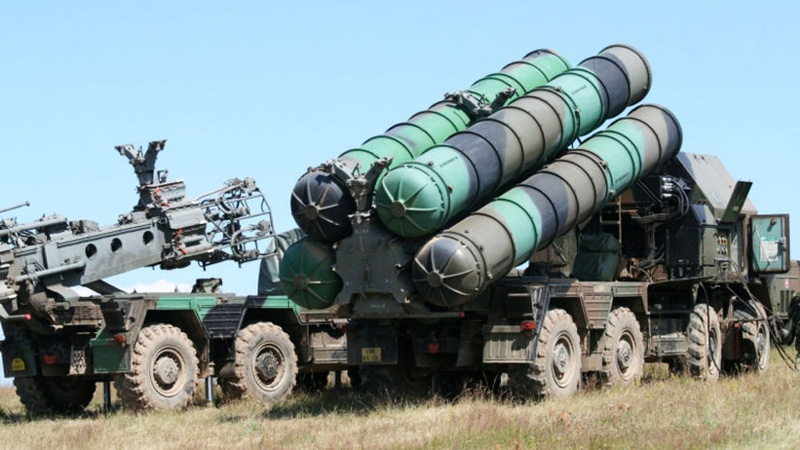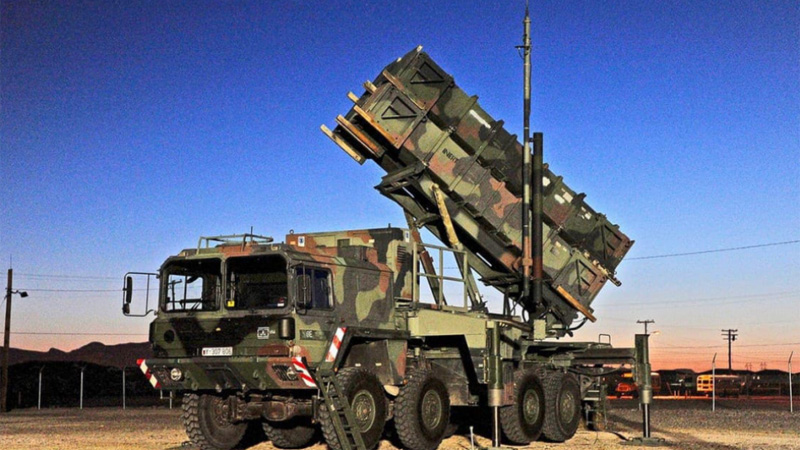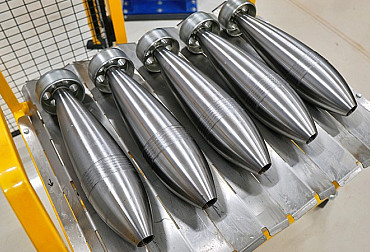How to proceed with the Air Defence of Slovakia
The current conflict in Ukraine shows how important the role of Air Defence, which consists of both fighter aircraft and Ground-Based Air Defence Systems, is in the defence of the state. To enable Ukraine to counter Russian air attacks, selected North Atlantic Treaty Organisation countries have been asked to supply Ukraine with their Air Defence systems. One of these countries was Slovakia, which sent Ukraine a Soviet-era S-300 system. Since Slovakia has no replacement for the S-300 system, it has negotiated within the alliance the presence of German, American and Dutch troops with Patriot systems on its territory. Since it cannot be assumed that the above-mentioned representatives of foreign armies will be in Slovakia forever, the question of the future of the Slovak Air Defence system needs to be addressed.
With the increasingly rapid development of new air combat assets, especially drones, more and more requirements are being placed on Air Defence systems. This applies not only to fighter aircraft, but also to ground-based Air Defence systems. Air Defence assets are being used to a large extent in the ongoing conflict in Ukraine. Slovakia has also sent its S-300 PMU system to Ukraine, having inherited the system, which was manufactured in 1987 after the division of Czechoslovakia. Generally speaking, Slovakia has not modernised its Air Defences since the division of Czechoslovakia, and to this day the backbone of its Air Defences are systems built during the Cold War.
 Picture: Slovakia sent its S-300 PMU system to Ukraine | Ministry of Defence of the Slovak Republic
Picture: Slovakia sent its S-300 PMU system to Ukraine | Ministry of Defence of the Slovak Republic
In terms of Air Defence, it can be said that the only modernisation projects in this area since the division of Czechoslovakia have been the acquisition of 17 radars from Israel and the purchase of new F-16 fighter aircraft. Until recently, the S-300 PMU system was also in the armament of the Slovak Air Force, but in April this year it was provided to Ukraine. On the one hand, the provision of the S-300 system to Ukraine is logical because it is a system that Ukraine uses in combat and has experience with. At the same time, however, the criticism of this decision can be understood to some extent, as Slovakia has lost a backbone Air Defence system.
Following the provision of the S-300 PMU system, the Ministry of Defence of the Slovak Republic managed to negotiate the presence of German, American and Dutch units with the Patriot Air Defence system on Slovak territory. Although the deployment of Patriot systems on Slovak territory is a significant strengthening of the protection of Slovak territory, it cannot be assumed that the contingent of allied troops with Patriot systems in Slovakia will remain in the long term.
 Picture: Following the provision of the S-300 PMU system, the Slovak Ministry of Defence managed to negotiate the presence of German, American and Dutch troops with the Patriot Air Defence system on Slovak territory. | Ministry of Defence of the Slovak Republic
Picture: Following the provision of the S-300 PMU system, the Slovak Ministry of Defence managed to negotiate the presence of German, American and Dutch troops with the Patriot Air Defence system on Slovak territory. | Ministry of Defence of the Slovak Republic
One of the major problems is the durability of the Air Defence systems. According to the Final Report of the 2020 Defence Spending Review, one hundred percent of the equipment of the Nitra Air Defence Missile Brigade is beyond its useful life. These include the 2K12 Kub systems, the 9K38 Igla portable complexes and, more recently, the S-300 PMU system. This is also related to the lack of spare parts, as these systems are of Soviet provenance. Sanctions against Russia and Russian companies, some of which have been in place since 2014, are also an obstacle. This proved to be a problem in 2015, when then Slovak Prime Minister Robert Fico wanted to upgrade the S-300 system, whose manufacturer is Almaz-Antej. However, the latter has been on the European Union's sanctions list since 2014. These problems are underlined by the latest Comprehensive Defence Assessment of the Slovak Republic for 2021, which points in particular to the low combat and operational capability of airborne and radar equipment and Air Defence systems, precisely because of the high failure rate and the end of technical life of the systems themselves or their components.
Air Defence can no longer be ignored
The current conflict in Ukraine shows, among other things, how important Air Defence is in a military conflict. Polish Defence Minister Mariusz Błaszczak, for example, is convinced of this, stating in a statement that in the context of the ongoing conflict in Ukraine, Poland is accelerating the delivery of Narew short-range Air Defence systems to its army. The project is a collaboration between the British branch of MBDA and the Polish PGZ-Narew consortium. According to the new accelerated delivery plan, the Polish army should receive the first two batteries of the Narew system in the coming months - the first battery during September and the second one at the turn of 2022 and 2023. The Narew system is to replace the obsolete 2K12 Kub and the mobile 9K33 Osa Very SHOrt-Range Air Defence system. In the recent past, the Czech Republic (Spyder systems, and shortly before that the RBS-70NG systems) and Lithuania (NASAMS) have also decided to upgrade their Air Defence systems.
As already mentioned, no purchase of modern Air Defence systems has been made by Slovakia, but there is speculation about a possible purchase of Patriot systems. The fact that Slovakia may be in negotiations to purchase this system was recently reported by Slovak Denník N. The purchase of Patriot systems would of course be a significant qualitative step forward, but other means of Air Defence should not be forgotten, which Slovakia should consider if it wants to effectively counter 21st century threats.
In addition to the possible purchase of Patriot systems, Slovakia should clearly think about replacing the portable 9K38 Igla systems of Soviet provenance. The Czech Republic, for example, decided in 2018 to purchase RBS-70NG systems to replace the outdated Soviet-made S-10 M2D Strela systems. Of course, several other similar systems could be considered, such as the British Starstreak kits, which, like the RBS-70NG kits, can be fitted on various types of armoured fighting vehicles. With the increasing use of unmanned vehicles, there is also the possibility of considering air defense systems that use microwaves, lasers, or can effectively disrupt communications between drones to disable them. Electronic warfare systems also play an important role in this regard.
In general, Air Defence systems are an indispensable element in combat operations. As with ground equipment, Air Defence systems must respond to current security threats and trends, which are becoming increasingly sophisticated. Since Slovakia is a NATO member, it should have gradually switched to non-Soviet/Russian-made equipment. The replacement of obsolete equipment is also favoured by the fact that due to the lack of spare parts, high failure rates and sanctions against Russia, the possibilities to modernise Cold War-era Air Defence systems are very limited.





















